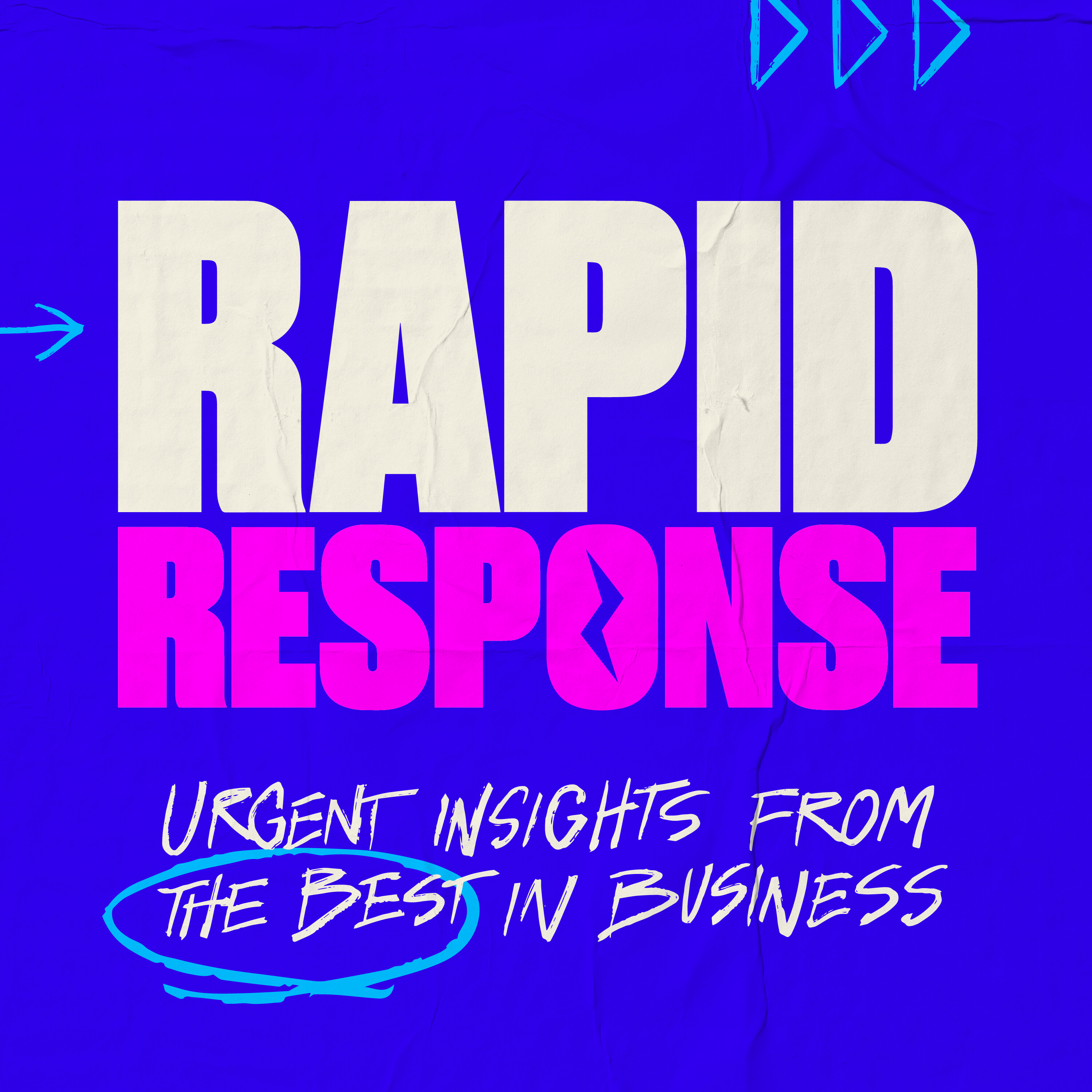
December 12, 2024 • 30min
Prepare for a ‘technology supercycle’, with futurist Amy Webb
Masters of Scale

Key Takeaways
- Technology Super Cycle: Three major technologies are converging - artificial intelligence, advanced sensor technology, and biotechnology - creating unprecedented opportunities and disruption
- Strategic Foresight is a data-driven way of seeing the future to make better strategic decisions, not just predicting trends
- Effective Change Management requires making future scenarios immediately relevant and actionable for stakeholders
- Look Beyond Direct Competitors - examine near peers, theoretical peers, and different industries for innovative solutions
- Traditional Regulation may not be the best approach for emerging technologies - need new frameworks focused on data ownership and economic incentives
Introduction
Amy Webb is the founder and CEO of the Future Today Institute, a leading strategic foresight and futures consultancy. As a futurist, professor at NYU's Stern School of Business, and bestselling author, she helps global companies and governments prepare for and shape the future through data-driven analysis and strategic planning.
Topics Discussed
Becoming a Futurist (03:32)
Webb shares her unconventional path to becoming a futurist, starting with studying game theory and economics in college with initial plans to become Solicitor General. After a pivotal LSAT experience derailed her law school plans, she:
- Spent time teaching English in Japan and reporting for major publications
- Found traditional journalism too focused on past events rather than future implications
- Started the Future Today Institute focused purely on strategic foresight
- Built the company without outside investment or debt
The Technology Super Cycle (08:18)
Webb introduces the concept of three converging general purpose technologies (GPTs) that are creating a technology super cycle:
- Artificial Intelligence - Moving beyond just large language models to impact multiple sectors
- Advanced Sensor Technology - Providing real-world behavioral data through millions of sensors
- Biotechnology - Enabling synthetic and generative biology applications
- The convergence of these technologies creates a flywheel effect where improvements in one area accelerate advances in others
Practical Applications (10:15)
Webb provides concrete examples of how these converging technologies are creating new possibilities:
- Advanced Sensors:
- Enable collection of real-world behavioral data beyond public datasets
- Power large action models that can predict behavior
- Create richer data tapestry for AI applications
- Biotechnology:
- Allows molecular structure generation similar to AI text generation
- Enables new material production like nitrile gloves
- Facilitates lab-grown meat production (e.g. Singapore's chicken production)
Making Future Insights Actionable (20:52)
Webb outlines a framework for organizations to leverage foresight:
- Track Signals - Identify early indicators of change
- Distinguish Trends vs Trendy - Focus on substantive shifts not fads
- Embrace Uncertainty - Acknowledge what cannot be controlled or known
- Map Scenarios - Create possible future states to guide planning
- Develop Foresight Capabilities - Build internal capacity to track and analyze changes
Driving Organizational Change (22:07)
Webb shares insights on how to effectively communicate future scenarios to drive change:
- Make it Relevant - Connect scenarios to immediate concerns
- Tell Compelling Stories - Use concrete examples people can relate to
- Support with Data - Back scenarios with credible evidence
- Focus on Tomorrow - Show clear next steps and actions
Regulation and Governance (27:17)
Webb presents a nuanced view on regulating emerging technologies:
- Traditional Regulation Challenges:
- Often reactive to past events
- Difficult to enforce effectively
- Can't anticipate future developments
- Leads to lawsuits rather than compliance
- Alternative Approaches:
- Data ownership trusts
- Economic incentives for participation
- Harmonized international frameworks
- Process-based versus product-based governance
Looking Beyond Direct Competition (30:08)
Webb emphasizes the importance of broader perspective in innovation:
- Examine Multiple Industries - Look for solutions in unexpected places
- Study Near Peers - Learn from adjacent sectors
- Adapt Existing Frameworks - Modify successful approaches from other contexts
- Avoid Competitive Tunnel Vision - Don't limit analysis to direct competitors
Future Outlook (31:04)
Webb shares her perspective on the future:
- Opportunity in Uncertainty - Current disruption creates new possibilities
- Strategic Advantage - Those thinking ahead will be better positioned
- Active Shaping - The future isn't predetermined but can be influenced
- "The future is not set in stone...somebody took the chessboard and shook up all the pieces and now we get to play a new game" - Amy Webb
Conclusion
Amy Webb provides a compelling framework for understanding and preparing for the future through strategic foresight. Her emphasis on the convergence of AI, sensors, and biotechnology highlights unprecedented opportunities while her practical approach to organizational change offers actionable insights for leaders. The key is not just predicting trends but developing the capabilities to track signals, embrace uncertainty, and make strategic decisions that shape a better future.
The conversation underscores that success in this rapidly evolving landscape requires looking beyond traditional competitive analysis, rethinking regulatory approaches, and making future scenarios immediately relevant to stakeholders. Organizations that develop these capabilities while remaining nimble enough to adapt their plans will be best positioned to thrive in the emerging technology super cycle.




